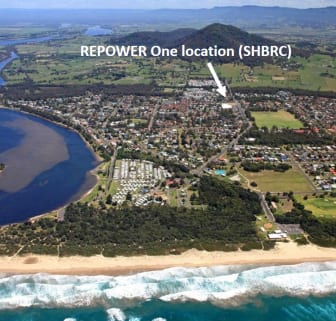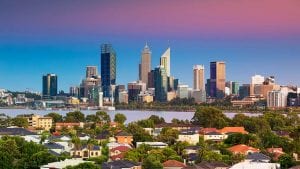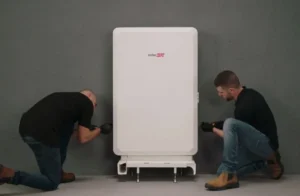(Note: This story has been updated to correct the amount to be raised from the public – $120,000, not $200,000 as originally published).
Installation of what will be Australia’s largest community-owned commercial solar system is set to begin next week, after the Shoalhaven Heads Bowling and Recreation Club signed off on the 99kW project on Tuesday.
The project, dubbed Repower One, is being driven by Repower Shoalhaven, a community group formed last year to spearhead the south-coast NSW town’s transition to sustainable energy systems.
The group this week launched its online campaign to raise $119,800 for the almost 100kW project, which would also be Australia’s largest such project financed by ‘everyday investors’.
Locals are now being invited to register their interest in the project, which will officially open for investor subscriptions next week.
Repower is calling for an upfront investment of $5,990 per shareholder, for a 3.96kW share of the system. The rate of return projected for investors is 6.5 per cent a year, over a 10-year period.
Ultimately, the plan is for 80 per cent of the rooftop solar system to be funded and owned by community shareholders, with the remaining 20 per cent to be owned and funded by the Club. The Club will purchase the electricity from the solar power system, ensuring investors a healthy revenue stream, and at the end of the 10-year term, the bowling club will be ‘gifted’ the system.
 “What’s so good about this type of project is that it’s developed by the Shoalhaven community via a democratic member process,” said Repower Shoalhaven’s president, Chris Cooper.
“What’s so good about this type of project is that it’s developed by the Shoalhaven community via a democratic member process,” said Repower Shoalhaven’s president, Chris Cooper.
“We’re still 100% run by volunteers who meet once a month in the town library to make it happen. We’re driven by the desire to see a strong local economy and proactive action on climate change.
“We are using local installers, suppliers and investors. That means most of the money will stay here, instead of going to a coal generator or a network monopoly to perpetuate an already unsustainable system. And surely that is positive, regardless of your politics”.
Tapping the local community for funds to develop solar is indeed an attractive proposition in regional communities like Shoalhaven, where finance for such projects might otherwise prove difficult to raise. But it is a model that is only just taking off in Australia.
“In Europe and North American, we’ve already seen the ‘crowd funding’ model used to make solar projects happen. But this is the first community-owned solar project in Australia and I think it will be the first of many for Repower Shoalhaven,” Cooper said.
In Victoria, a group called LIVE – Locals Into Victoria’s Environment – is attempting a similar feat, only in this case it is for a project in the inner city, to install up to 1000 solar panels on the roof of the South Melbourne Market, adding to about 150 already in place there.
LIVE spokesman and co-founder David Robinson has noted that for inner city dwellers who rent, or live in public housing, installing solar on their own roof is not an option.
Inviting inner city locals to invest small amounts – often around $1000 – to install large solar arrays on community or commercial properties like that planned for the South Melbourne Market offers them the chance to participate in the shift to renewable energy.
And Cooper agrees. “With community solar, everyone can invest. “Retirees, mums and dads, renters, apartment dwellers and so on – we are really trying to make solar ownership more accessible than ever,” Cooper said.
For the community of Shoalhaven, the Bowling Club project is seen as a three-way win.
“Not only do we avoid the upfront cost of the system, but we purchase electricity that is affordable, clean and locally owned. It’s a win for the Club, the community and the environment,” said the Club’s general manager, Mick Bowen.
And Lyn Easton, the Club’s President, says the project is also about educating the community on how to save on electricity bills.
“It’s better to be pro-active and innovative,” Easton said. “I’m very interested to see the positive difference the solar system makes to future electricity bills.”







